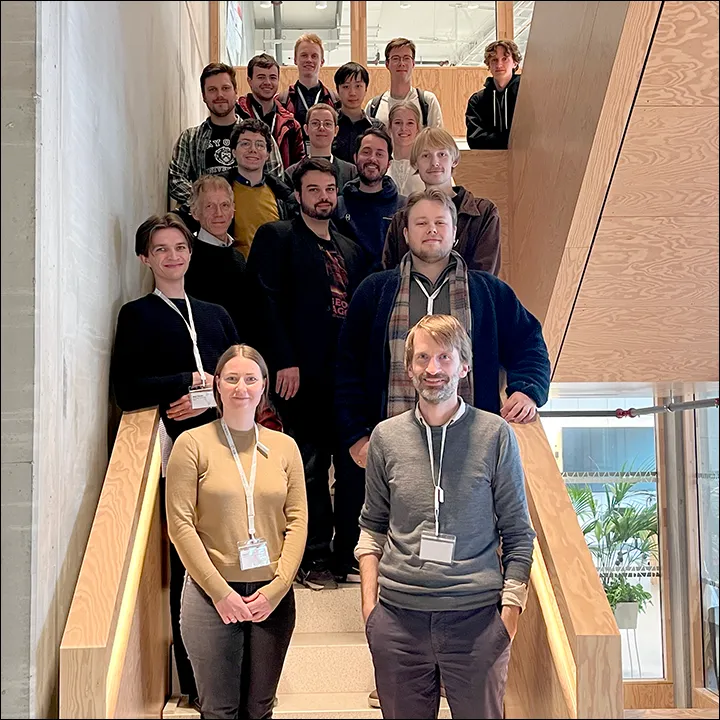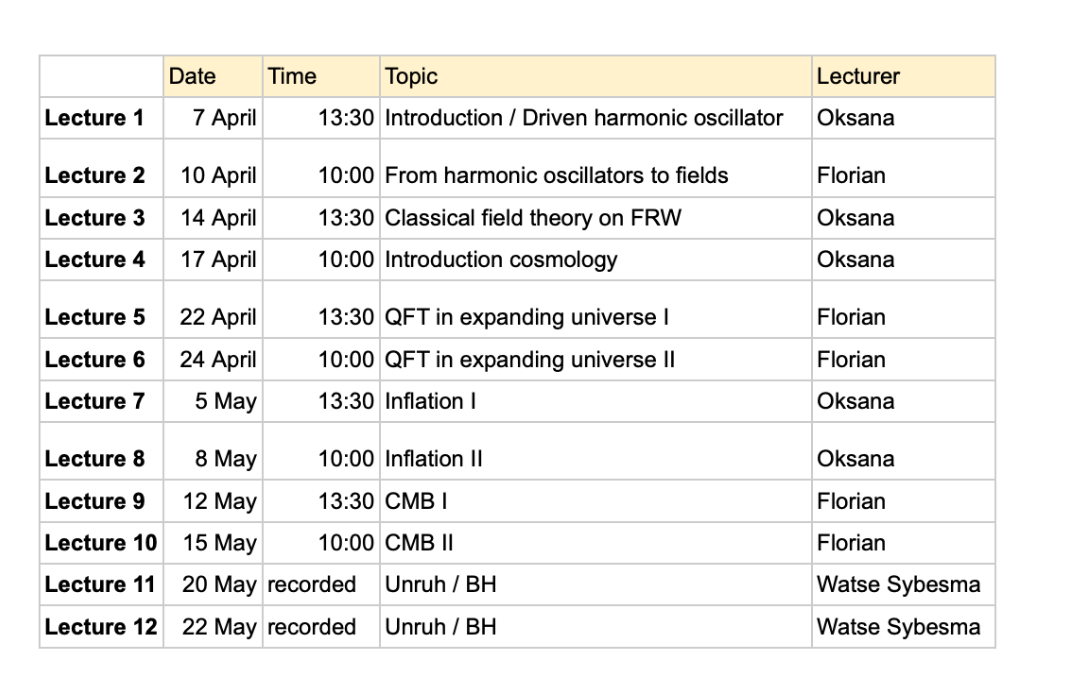Venue
Albano campus, Nordita, Stockholm, Sweden
House 3, Floor 6, Mega 6228
See the campus and Google maps via the links.
Target Audience
This course is designed for PhD students and young postdocs in theoretical physics, particularly those interested in the intersection of quantum mechanics, general relativity, and cosmology.
We invite students at SU and KTH to attend the course in person. Students from other universities within the Nordic countries (broadly defined) are welcome to join remotely via Zoom.
The course is also suitable for advanced master students (please inquire regarding the possibility of a certificate) and researchers looking to deepen their knowledge of quantum field theory in curved backgrounds.

The target audience at the on-site class on 5 May 2025.
Prerequisites
General Relativity, basic QFT and Cosmology.
Scope
This advanced course delves into the subject of quantum field theory (QFT) in the presence of curved backgrounds.
Students will learn
- how to consistently formulate a quantum field theory in a curved spacetime backgrounds,
- study particle creation in expanding universes (with inflation as the main application),
- the behavior of quantum fields in the presence of horizons and the phenomenon of Hawking radiation.
This course is essential for understanding the interplay between quantum mechanics and general relativity, two of the fundamental pillars of modern theoretical physics, with applications to active research topics in cosmology and particle physics.
Key topics
- Introduction and Recap: A brief review of QFT in Minkowski space and essential concepts of General Relativity and Cosmology.
- Quantum Fields in Expanding Universe: The formulation of QFT in curved spacetimes is introduced. This includes the mode decomposition in curved backgrounds and Bogoliubov transformations.
- Particle Creation and Unruh Effect.
- Quantum Fields during Inflation: Study of primordial fluctuations with connection to the Cosmic Microwave background (CMB) observations.
- Hawking Radiation and Black Holes: Study of Hawking radiation, the process by which black holes emit particles and evaporate, and its implications for black hole thermodynamics.
Format
The course will start in April 2025 (preliminary start date 7th of April). As a registered particpant you should have received a link to join the Slack workspace of the lecture.
The in-person participants are supposed to come to Nordita. The remote participants can join the meetings via Zoom.
The course will run for six weeks and consist of two weekly lectures (90 minutes each). It will be mainly based on the following book:
Mukhanov, V., & Winitzki, S. (2007), Introduction to Quantum Effects in Gravity, Cambridge University Press (link).
Problems will be provided to the students. The solutions can be discussed with the lecturers on Slack.
The lectures are aimed at PhD students, but Master students and more experienced researchers are welcome to join, too.
Zoom/Slack coordinates
Please reach out to the organizers to get access to the zoom and Slack workspace.
Lecture schedule
This is the preliminary schedule of the lecture.

Application
Due to limited capacity, participation in the lecture requires approval by the lecturers.
The registration is closed now. Please contact the organizers about the possibility of participating in the course.
Lecturers
Oksana Iarygina (Nordita Postdoc, Marie Skłodowska-Curie Fellow)
Florian Niedermann (Nordita Assistant Professor)
Guest lecturer on BHs and Hawking radiation: Watse Sybesma (Nordita Assistant Professor)


